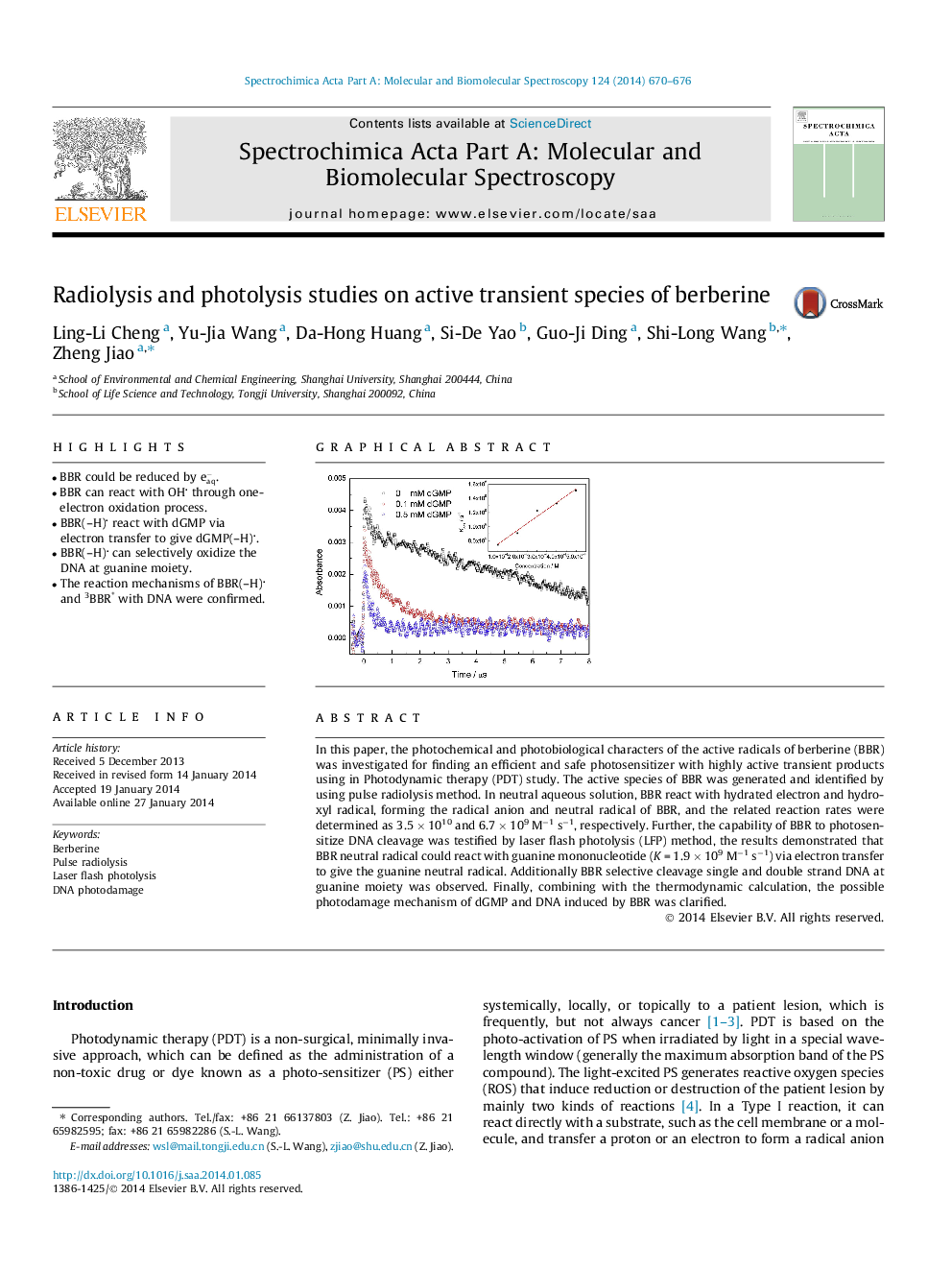| Article ID | Journal | Published Year | Pages | File Type |
|---|---|---|---|---|
| 1234339 | Spectrochimica Acta Part A: Molecular and Biomolecular Spectroscopy | 2014 | 7 Pages |
•BBR could be reduced by eaq-.•BBR can react with OH through one-electron oxidation process.•BBR(–H) react with dGMP via electron transfer to give dGMP(–H).•BBR(–H) can selectively oxidize the DNA at guanine moiety.•The reaction mechanisms of BBR(–H) and 3BBR* with DNA were confirmed.
In this paper, the photochemical and photobiological characters of the active radicals of berberine (BBR) was investigated for finding an efficient and safe photosensitizer with highly active transient products using in Photodynamic therapy (PDT) study. The active species of BBR was generated and identified by using pulse radiolysis method. In neutral aqueous solution, BBR react with hydrated electron and hydroxyl radical, forming the radical anion and neutral radical of BBR, and the related reaction rates were determined as 3.5 × 1010 and 6.7 × 109 M−1 s−1, respectively. Further, the capability of BBR to photosensitize DNA cleavage was testified by laser flash photolysis (LFP) method, the results demonstrated that BBR neutral radical could react with guanine mononucleotide (K = 1.9 × 109 M−1 s−1) via electron transfer to give the guanine neutral radical. Additionally BBR selective cleavage single and double strand DNA at guanine moiety was observed. Finally, combining with the thermodynamic calculation, the possible photodamage mechanism of dGMP and DNA induced by BBR was clarified.
Graphical abstractFigure optionsDownload full-size imageDownload as PowerPoint slide
